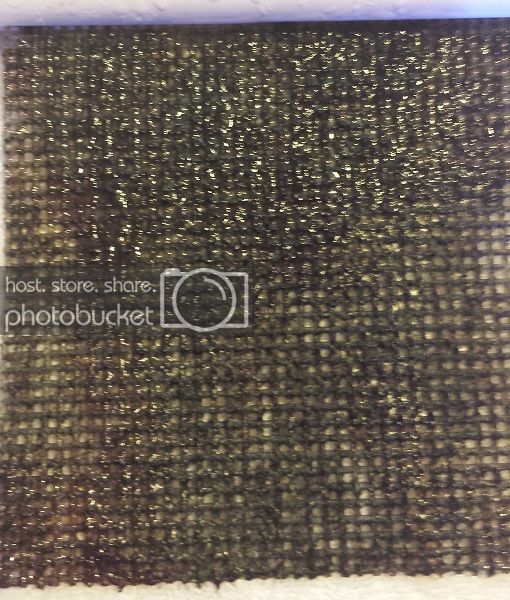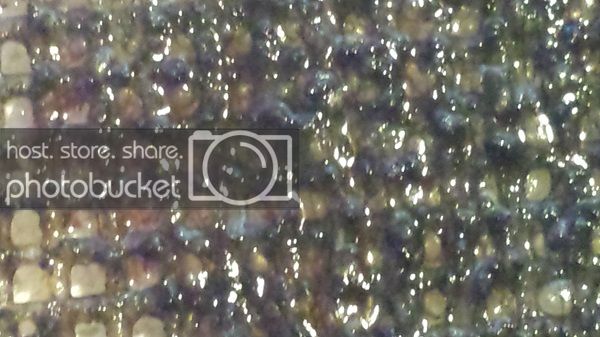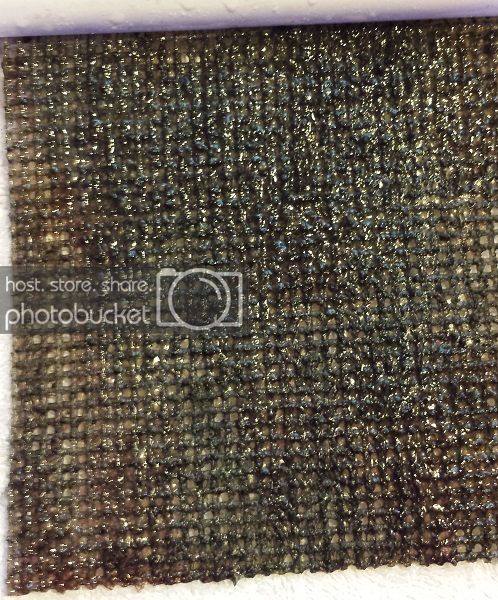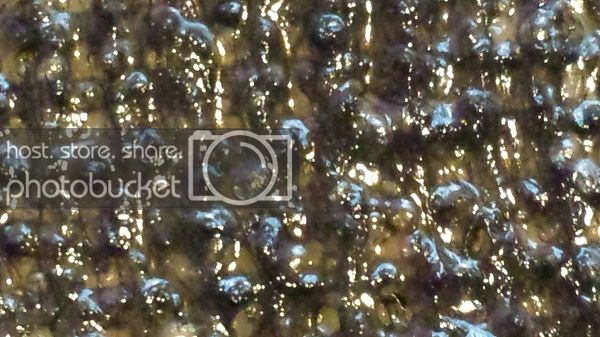Is needing more light.
Navigation
Install the app
How to install the app on iOS
Follow along with the video below to see how to install our site as a web app on your home screen.
Note: This feature may not be available in some browsers.
More options
You are using an out of date browser. It may not display this or other websites correctly.
You should upgrade or use an alternative browser.
You should upgrade or use an alternative browser.
My Algae Turf Scrubber Build
- Thread starter labas39
- Start date
- Tagged users None
Is needing more light.
Are you saying that I need more light?
Others had success with the light you bought but if you do change your mind, I may be interested in it.Guess im re thinking that light i just bought ?
others had success with the light you bought but if you do change your mind, i may be interested in it.
i messaged santa monica with the info of what my plan was , waiting to hear back from them and see what they say ? But still tagging along here to see how things go on your end
Sorry I had a really busy week and weekend, and this thread is not working for me for some odd reason on one of my PCs - I can't view page 2, but I can see page 1 and 3 just fine via FF. Chrome works fine. It's only this thread, really odd.
Bowhunter I got your PM sorry I didn't reply, but that light you bought should do well. I've seen several people use it. The thing you have to watch for is intensity initially. If you take a new screen and put a super powerful LED grow light on it, then you can get what is called photosaturation. There is so much light available, and very little algae growing, so you end up overpowering the algae and it never grows, or grows very slow through the initial stages. This can be compensated for by placing a diffuser over the front of the fixture, same stuff as what is in ceiling 2x4 light fixtures, you can get it at Lowe's for $5 a sheet and score & snap it (wear eye protection). You can also just back the lights off initially, if you have the space, or aso you can split the photoperiod up into 2 hour segments with an hour in between.
Run LEDs initially at 9 hours/day (NOT 18). Adjust photoperiod as necessary but don't constantly change things, just let it grow. This goes for any high-power LED fixture (meaning, 1W or 3W heat-sunk LEDs). For non-heat-sunk LEDs, run them as long as it takes to get growth, even 24/7 is not going to hurt with low-power LEDs IMO but I would go 22 and give the algae a break. Randy Holmes-Farley has told me in an RC thread that you can run 24/7 without problem no matter what light source though so take that for what it is.
It seems that with high power LED, and not so much with CFL, there is a more prevalent relationship between GHA and a brown slime coating on top of GHA. So once your screen is mature (meaning, you need to scrape to remove GHA and after rinsing, over 50% of the holes are still filled or mostly filled with GHA) you might start to notice that later in the growth cycle you have lots of GHA but when you shut the water off to clean, there is a gooey coating that is brown and slimy, is easily removed by swiping it off with your hand or a scraper, breaks apart/dissolves easily, and stinks really bad (putrid/pungent smelling). Kinds smells like diatoms or dinoflagellates, probably because that's what it is (I have not had these spread from the scrubber to the display tank, ever). This seems to happen when you have an imbalance between light delivered and nutrients delivered. This can happen in several ways:
Tank is low on N and P. Scrubber lit for too long. Reduce photoperiod and/or intensity. Adding flow won't do much, because you don't have nutrients to deliver.
Tank has N and P but it is stable. Scrubber is not getting enough nutrients per the lighting. Increase flow so that light and nutrients deliver is balanced.
Tank has N and P, scrubber is green, no slime. This is a stable point, but to increase scrubber production, you increase light along with flow (proportionally).
And my take on the whole new guideline SM just posted goes back to the questionable logic of the whole "phosphate flow out of rocks" theory. Go read tmz's or Randy Holmes-Farley's thoughts on these subjects on RC in the threads I have started on the subject or the big DSB debate thread which had devolved into a phosphate discussion and you will see that this at best is unproven.
I would stick to the current sizing guideline for waterfall scrubbers, what I have found is that when built right, LED based scrubbers are far more flexible as far as capacity is concerned when taking into account the ability to increase flow and photoperiod/intensity proportionally in order to deliver nutrients to the screen. The new guideline seems to be applicable to upflow scrubbers, which IMO do not scale up well for large systems and have a limitation on water turnover rate capability. Don't get me wrong, UASs have their place and they are a solution for situations where a waterfall scrubber does not work, but IMO they do have their limitation.
labas39, I agree that your screen needs more light. A lot more light. How long are you running your current lights? Since they are LP, bump up to 22 hours/day.
Here is my recommendation for LED lighting of a waterfall algae scrubber screen:
This is for a double-sided screen using Philips Luxeon ES 3W Deep Red 660nm LEDs without lenses (120 degree) running at 700mA at 2-3" from the screen to LED
Minimum coverage: One LED on each side of every 8 sq in of screen
Maximum coverage: One LED on each side of every 4 sq in of screen
Simple as that. For new screens (bare) if using the "Maximum" level, run at 350mA until mature, or use a diffuser. Might have to do this with the Minimum level also actually, but not typically. The minimum could probably be stretched to a larger area but screen will cure slower and generally have less capacity.
So for a 6x6 screen, which is 36 sq in, /8=4.5 per side. Make it 5.
So for a 6x6 screen, which is 36 sq in, /4=9 per side.
Supplementing with blue/violet: Always run at 350mA. Use one to two at this current level for every 5-6 reds, roughly. Lots of flexibility here, a little blue/violet goes a long way. I've used 440-445nm Royal Blue Luxeon ESs for this, but I know of at least one other that used to use RBs and switched to Deep Violets and almost doubled growth. Steve's used to carry a good one but it was on a bad substrate so he pulled them. They are getting a better one in but it will be about 3-4 weeks before it's available, and then I will be testing them out on some established scrubbers.
Bowhunter I got your PM sorry I didn't reply, but that light you bought should do well. I've seen several people use it. The thing you have to watch for is intensity initially. If you take a new screen and put a super powerful LED grow light on it, then you can get what is called photosaturation. There is so much light available, and very little algae growing, so you end up overpowering the algae and it never grows, or grows very slow through the initial stages. This can be compensated for by placing a diffuser over the front of the fixture, same stuff as what is in ceiling 2x4 light fixtures, you can get it at Lowe's for $5 a sheet and score & snap it (wear eye protection). You can also just back the lights off initially, if you have the space, or aso you can split the photoperiod up into 2 hour segments with an hour in between.
Run LEDs initially at 9 hours/day (NOT 18). Adjust photoperiod as necessary but don't constantly change things, just let it grow. This goes for any high-power LED fixture (meaning, 1W or 3W heat-sunk LEDs). For non-heat-sunk LEDs, run them as long as it takes to get growth, even 24/7 is not going to hurt with low-power LEDs IMO but I would go 22 and give the algae a break. Randy Holmes-Farley has told me in an RC thread that you can run 24/7 without problem no matter what light source though so take that for what it is.
It seems that with high power LED, and not so much with CFL, there is a more prevalent relationship between GHA and a brown slime coating on top of GHA. So once your screen is mature (meaning, you need to scrape to remove GHA and after rinsing, over 50% of the holes are still filled or mostly filled with GHA) you might start to notice that later in the growth cycle you have lots of GHA but when you shut the water off to clean, there is a gooey coating that is brown and slimy, is easily removed by swiping it off with your hand or a scraper, breaks apart/dissolves easily, and stinks really bad (putrid/pungent smelling). Kinds smells like diatoms or dinoflagellates, probably because that's what it is (I have not had these spread from the scrubber to the display tank, ever). This seems to happen when you have an imbalance between light delivered and nutrients delivered. This can happen in several ways:
Tank is low on N and P. Scrubber lit for too long. Reduce photoperiod and/or intensity. Adding flow won't do much, because you don't have nutrients to deliver.
Tank has N and P but it is stable. Scrubber is not getting enough nutrients per the lighting. Increase flow so that light and nutrients deliver is balanced.
Tank has N and P, scrubber is green, no slime. This is a stable point, but to increase scrubber production, you increase light along with flow (proportionally).
And my take on the whole new guideline SM just posted goes back to the questionable logic of the whole "phosphate flow out of rocks" theory. Go read tmz's or Randy Holmes-Farley's thoughts on these subjects on RC in the threads I have started on the subject or the big DSB debate thread which had devolved into a phosphate discussion and you will see that this at best is unproven.
I would stick to the current sizing guideline for waterfall scrubbers, what I have found is that when built right, LED based scrubbers are far more flexible as far as capacity is concerned when taking into account the ability to increase flow and photoperiod/intensity proportionally in order to deliver nutrients to the screen. The new guideline seems to be applicable to upflow scrubbers, which IMO do not scale up well for large systems and have a limitation on water turnover rate capability. Don't get me wrong, UASs have their place and they are a solution for situations where a waterfall scrubber does not work, but IMO they do have their limitation.
labas39, I agree that your screen needs more light. A lot more light. How long are you running your current lights? Since they are LP, bump up to 22 hours/day.
Here is my recommendation for LED lighting of a waterfall algae scrubber screen:
This is for a double-sided screen using Philips Luxeon ES 3W Deep Red 660nm LEDs without lenses (120 degree) running at 700mA at 2-3" from the screen to LED
Minimum coverage: One LED on each side of every 8 sq in of screen
Maximum coverage: One LED on each side of every 4 sq in of screen
Simple as that. For new screens (bare) if using the "Maximum" level, run at 350mA until mature, or use a diffuser. Might have to do this with the Minimum level also actually, but not typically. The minimum could probably be stretched to a larger area but screen will cure slower and generally have less capacity.
So for a 6x6 screen, which is 36 sq in, /8=4.5 per side. Make it 5.
So for a 6x6 screen, which is 36 sq in, /4=9 per side.
Supplementing with blue/violet: Always run at 350mA. Use one to two at this current level for every 5-6 reds, roughly. Lots of flexibility here, a little blue/violet goes a long way. I've used 440-445nm Royal Blue Luxeon ESs for this, but I know of at least one other that used to use RBs and switched to Deep Violets and almost doubled growth. Steve's used to carry a good one but it was on a bad substrate so he pulled them. They are getting a better one in but it will be about 3-4 weeks before it's available, and then I will be testing them out on some established scrubbers.
Last edited:
Thanks for all the info!
I was on Steve's LED site and saw the LED's, other than the Deep Violet, that you mentioned. I've never done a DIY LED project so I don't feel too comfortable since I don't even know all the pieces I'd need to purchase. The light that BOWHUNTER purchased was one that I was eying before I started the build but decided against it. For my 6x6 screen, you recommend a minimum of 5 x 3 = 15 watts up to 9 x 3 = 27 watts. It seems that even BOWHUNTER's, at 10 watts will be too little.
Maybe I'll bite the bullet and build the light from scratch.
For now, I put the CFL back on.
I was on Steve's LED site and saw the LED's, other than the Deep Violet, that you mentioned. I've never done a DIY LED project so I don't feel too comfortable since I don't even know all the pieces I'd need to purchase. The light that BOWHUNTER purchased was one that I was eying before I started the build but decided against it. For my 6x6 screen, you recommend a minimum of 5 x 3 = 15 watts up to 9 x 3 = 27 watts. It seems that even BOWHUNTER's, at 10 watts will be too little.
Maybe I'll bite the bullet and build the light from scratch.
For now, I put the CFL back on.
On the LED fixture that Bowhunter bought, and non DIY-LEDs in general, this is what I have roughed out to help with this.
The issue is that my DIY LED guideline is based on coverage. You can't say "I need 5 3W LEDs which is 15W, so a 15 W fixture is what I need". It doesn't work that way.
That's because a 3W LED does not necessarily consume 3W, and a purchased LED may rate it's intensity based on actual wattage used, or it may add up the LEDs and give a wattage but the actual watt draw is less. You have to watch for this.
A 3W Philips Luxeon ES 660nm LED will typically drop 2.2v across the LED at 700mA. Power = Amps * Volts so 2.2 V * 0.700 A = 1.54W. What? I thought it was a 3W. It is. That is something called MARKETING. The LEDs become more efficient, so a lover Vdrop and Idrive results in the same output, but instead of calling it a 1.5W and confusing everyone, they call it a 3W still.
So now on to your fixture you are looking at.
Converting the "LED per unit area guideline" to a "wattage" guideline is as simple as doing the math.
Figure out what you need per the "unit area" guideline. In the above example, 6x6 screen, max level, 5x 3W per side. Each is actually drawing 1.5W, so 5x1.5 = 7.5W. Your light fixture should actually consume, at the wall, a minimum of 7.5W. The electronics built into the fixture will draw power also, meaning that you might want to add a little cushion to the number. So a 10W fixture on a 6x6 screen would be about right for a comparable replacement to an array of 5 3W LEDs.
Now let's add that factor in and parallel it to screen size. A 6x6 screen = 36 sq in. Make it 40. you need a 10W actual-draw LED fixture on each side of this. So you could say that the rule of thumb for a pre-built LED fixture is that you need 0.25W per square inch of screen. That would get you into the Maximum light arena - or "High Intensity".
Half of that would put you on the lower end. 0.125W per square inch - actual wattage draw of fixture.
What you have to watch for is when they use a multi-chip that has 9 1W LEDs on it and they call that 10W. Not necessarily true. But 1W LEDs are actually more efficient than 3W LEDs when you are talking radiant flux output per unit of energy input into the LED, so it's not horrible, just shoot for the higher light level and you'll be OK usually. At best, you will actually be at the high level. At worst, you'll be on the low side but still OK.
Bowhunter for your 24 x 9 = 216 sq in, you want minimum 0.125W/sq in = 27W total on each side. Now for a screen that is rectangular such as this, a singe LED fixture will likely not cut it, because of coverage. So your 10W fixture you got is fine, because those fixtures seem to cover a nice square area, but you would probably want 2 of these on each side of your screen. You might consider a 10W and a 20W on each side, but I think that 2x 10W per side would do.
Still, if you just used one, you will get good filtration, but it might be limited by the amount of light you can deliver. Pulling the fixtures back too far to try to get good coverage might result in decreased overall intensity to the point that GHA won't grow anywhere. So use them and see what happens before you go buying another set of 2 fixtures. You can also supplement with a small CFL on one half of each side also if you find that you don't have enough light, and see how your screen/tank does. 216 sq in/12 = 18 cubes/day, do you really feed that much? Might be able to go with half that size and the same flow. Make it an 8x8 and your screen and lights are matched better.
The issue is that my DIY LED guideline is based on coverage. You can't say "I need 5 3W LEDs which is 15W, so a 15 W fixture is what I need". It doesn't work that way.
That's because a 3W LED does not necessarily consume 3W, and a purchased LED may rate it's intensity based on actual wattage used, or it may add up the LEDs and give a wattage but the actual watt draw is less. You have to watch for this.
A 3W Philips Luxeon ES 660nm LED will typically drop 2.2v across the LED at 700mA. Power = Amps * Volts so 2.2 V * 0.700 A = 1.54W. What? I thought it was a 3W. It is. That is something called MARKETING. The LEDs become more efficient, so a lover Vdrop and Idrive results in the same output, but instead of calling it a 1.5W and confusing everyone, they call it a 3W still.
So now on to your fixture you are looking at.
Converting the "LED per unit area guideline" to a "wattage" guideline is as simple as doing the math.
Figure out what you need per the "unit area" guideline. In the above example, 6x6 screen, max level, 5x 3W per side. Each is actually drawing 1.5W, so 5x1.5 = 7.5W. Your light fixture should actually consume, at the wall, a minimum of 7.5W. The electronics built into the fixture will draw power also, meaning that you might want to add a little cushion to the number. So a 10W fixture on a 6x6 screen would be about right for a comparable replacement to an array of 5 3W LEDs.
Now let's add that factor in and parallel it to screen size. A 6x6 screen = 36 sq in. Make it 40. you need a 10W actual-draw LED fixture on each side of this. So you could say that the rule of thumb for a pre-built LED fixture is that you need 0.25W per square inch of screen. That would get you into the Maximum light arena - or "High Intensity".
Half of that would put you on the lower end. 0.125W per square inch - actual wattage draw of fixture.
What you have to watch for is when they use a multi-chip that has 9 1W LEDs on it and they call that 10W. Not necessarily true. But 1W LEDs are actually more efficient than 3W LEDs when you are talking radiant flux output per unit of energy input into the LED, so it's not horrible, just shoot for the higher light level and you'll be OK usually. At best, you will actually be at the high level. At worst, you'll be on the low side but still OK.
Bowhunter for your 24 x 9 = 216 sq in, you want minimum 0.125W/sq in = 27W total on each side. Now for a screen that is rectangular such as this, a singe LED fixture will likely not cut it, because of coverage. So your 10W fixture you got is fine, because those fixtures seem to cover a nice square area, but you would probably want 2 of these on each side of your screen. You might consider a 10W and a 20W on each side, but I think that 2x 10W per side would do.
Still, if you just used one, you will get good filtration, but it might be limited by the amount of light you can deliver. Pulling the fixtures back too far to try to get good coverage might result in decreased overall intensity to the point that GHA won't grow anywhere. So use them and see what happens before you go buying another set of 2 fixtures. You can also supplement with a small CFL on one half of each side also if you find that you don't have enough light, and see how your screen/tank does. 216 sq in/12 = 18 cubes/day, do you really feed that much? Might be able to go with half that size and the same flow. Make it an 8x8 and your screen and lights are matched better.
PS that was me just now writing a new guideline. You saw it here first :rockon:
PS that was me just now writing a new guideline. You saw it here first :rockon:
just so i understand this correctly , my screen size currently im going to use will be 11 x 8 ... i should use the 10w led fixture and suppliment with 1 cfl on each side ? i wanted to start with lighting just one side as i feed approx. 2-3 cubes a day , i have the room to add lights on the other side later if needed but this was going to be my starting point ? if so ..... photo period with both these lights ?
thanks
You will be good for 2-3 cubes/day with one of those on each side. The screen size & lights are not "matched" but all that really matters is that you have enough light to support the growth you need per the feeding. You might get some funky growth outside of the light coverage, but it will work.
Start with 9 hrs/day, it might take 2-3 weeks to get growth started, but only make adjustments by adding 1-2 hours/day to the cycle once a week. Give it 7 days to see what happens from the change. yu should not need more than 12 hrs/day initially I wouldn't think, especially on a bare screen.
With 11x8 I don't think you will need supplemental CFL, definitely not at first. Only if you get the screen matured and it's not enough filtration.
Start with 9 hrs/day, it might take 2-3 weeks to get growth started, but only make adjustments by adding 1-2 hours/day to the cycle once a week. Give it 7 days to see what happens from the change. yu should not need more than 12 hrs/day initially I wouldn't think, especially on a bare screen.
With 11x8 I don't think you will need supplemental CFL, definitely not at first. Only if you get the screen matured and it's not enough filtration.
You will be good for 2-3 cubes/day with one of those on each side. The screen size & lights are not "matched" but all that really matters is that you have enough light to support the growth you need per the feeding. You might get some funky growth outside of the light coverage, but it will work.
Start with 9 hrs/day, it might take 2-3 weeks to get growth started, but only make adjustments by adding 1-2 hours/day to the cycle once a week. Give it 7 days to see what happens from the change. yu should not need more than 12 hrs/day initially I wouldn't think, especially on a bare screen.
With 11x8 I don't think you will need supplemental CFL, definitely not at first. Only if you get the screen matured and it's not enough filtration.
so i should really be using one of those 10w fixtures on each side and not just on 1 .... i will order another fixture and get this bad boy up and running ! still using the diffusers you mentioned correct ? if at what point do i takr the diffusers off ? i will have the lights approx 5" away from the screen ?
2 sided is always better than single sided because the light penetrates deeper from one side to the other, meaning you can go longer between cleanings.
at 5" you probably don't need diffusers but you might not get as think of growth if it were closer. Start at 5", that will lower the intensity and allow for initial growth to start without phoninhibition. Then see how it fills in, then move the lights closer to get more intensity if needed. Every setup is different so it's more of an individual judgement call than a set-in-stone rule.
at 5" you probably don't need diffusers but you might not get as think of growth if it were closer. Start at 5", that will lower the intensity and allow for initial growth to start without phoninhibition. Then see how it fills in, then move the lights closer to get more intensity if needed. Every setup is different so it's more of an individual judgement call than a set-in-stone rule.
PS that was me just now writing a new guideline. You saw it here first :rockon:
Cool!
The guideline post might help:
https://www.reef2reef.com/forums/do...updated-algae-scrubber-sizing-guidelines.html
https://www.reef2reef.com/forums/do...updated-algae-scrubber-sizing-guidelines.html
2 sided is always better than single sided because the light penetrates deeper from one side to the other, meaning you can go longer between cleanings.
at 5" you probably don't need diffusers but you might not get as think of growth if it were closer. Start at 5", that will lower the intensity and allow for initial growth to start without phoninhibition. Then see how it fills in, then move the lights closer to get more intensity if needed. Every setup is different so it's more of an individual judgement call than a set-in-stone rule.
thanks , ill get another fixture and run 2 sided
Day 19's Growth
I'm getting a little red algae on the left and right side of the screen. I haven't checked my levels in a while so I'm not sure of any changes in that respect.
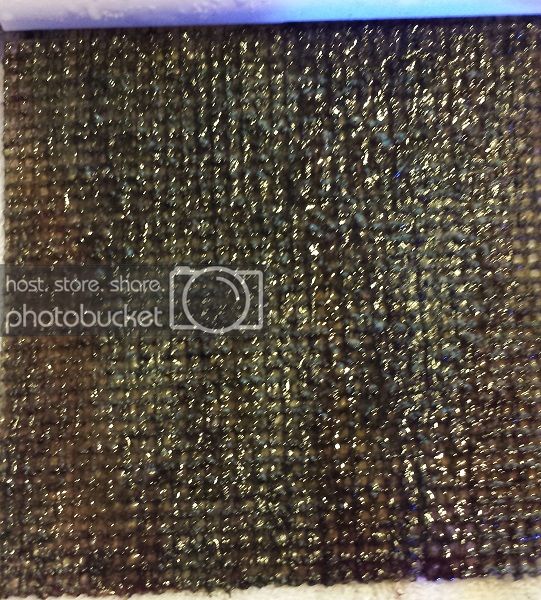
I'm getting a little red algae on the left and right side of the screen. I haven't checked my levels in a while so I'm not sure of any changes in that respect.

Similar threads
- Replies
- 1
- Views
- 191
- Replies
- 3
- Views
- 111
- Replies
- 5
- Views
- 109










